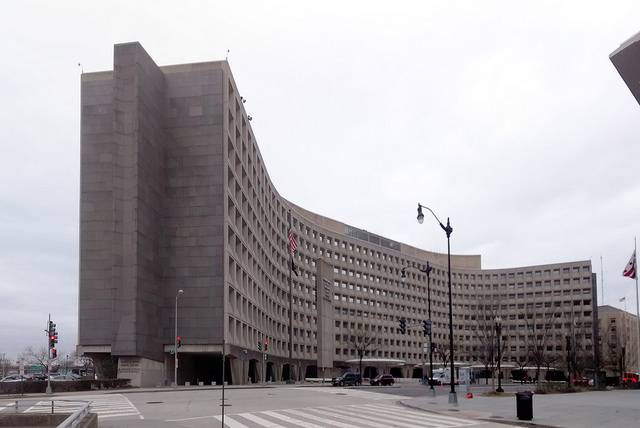
The Federal Housing Administration (FHA) has been a big target in Washington for a long time. The big mortgage insurance arm of the U.S. Department of Housing and Urban Development (HUD) is disliked in large measure because some believe that by offering a service that’s also provided by the private sector, the FHA is an affront to free enterprise.
One result has been that Congress has required that FHA reserves have a capital ratio of at least 2%, a ratio that at the end of FY 2016 reached 2.09%. Yet, despite much complaining about the FHA’s reserves, Congress hasn’t had much to say about other government insurance plans. For instance, in the second quarter of 2017, the FDIC—which protects your bank account—had a capital ratio of 1.04% for its reserve account. And by any reasonable standard, the National Flood Insurance Program (NFIP) is flat-out bankrupt: it owed the Treasury $24.6 billion earlier this year—before Hurricanes Harvey, Irma and Maria.
In the name of risk reduction, the Congressional Budget Office (CBO) issued a report in September 2017 that examined options to reduce FHA’s exposure to risk from its program to guarantee single-family mortgages. The options included creating a larger role for private lenders and restricting the availability of FHA’s guarantees, and were all aimed at letting the FHA “continue to fulfill its primary mission of ensuring access to credit for first-time homebuyers and low-income borrowers.”
The most obvious and fastest way to reduce FHA risk would be to stop insuring reverse mortgages, what HUD calls home equity conversion mortgages (HECMs). The CBO report carefully doesn’t consider this option, even though HUD says that since FY 2009, FHA-insured reverse mortgages have resulted in a net cost of $11.7 billion.
Claim up to $26,000 per W2 Employee
- Billions of dollars in funding available
- Funds are available to U.S. Businesses NOW
- This is not a loan. These tax credits do not need to be repaid
If the FHA stopped backing reverse mortgages, there would be a real opportunity for the private sector to shine. With the FHA out of the picture, wouldn’t well-capitalized mortgage insurers rush into the picture with equivalent reverse mortgage products and pricing? This is like asking if Tesla would like to introduce a new and improved Edsel.
7 Options for Cutting FHA Mortgage Risks
After taking money-losing, high-risk HECMs off the table, the CBO outlined seven potential options to reduce FHA risk, as well as the projected savings each option might produce.
- Right now, lenders have a 100% guarantee against loss. If lenders had some loss exposure, the FHA would save $11 billion when it was in the first-loss position.
- In cases where the FHA is in the second-loss position, it could save $10 billion if lenders had some loss liability. The two lender benefits together represent $21 billion in potential FHA savings.
- If we restrict FHA eligibility to first-time homebuyers and low-to-moderate-income borrowers, the CBO says $7 billion in risk could be eliminated. Borrowers would have fewer choices, of course, and could wind up spending more for remaining loan products.
- More mortgage counseling could save the FHA $6 billion.
- If we reduced FHA loan limits, we cut potential losses by $4 billion. Again, this would reduce borrower options and possibly raise costs.
- FHA borrowers now pay the same insurance fees regardless of credit. With risk-based pricing, the FHA would save $2 billion by charging more for risky borrowers and less for borrowers with exceptional credit.
- The VA loan-guarantee program very successfully uses a residual income test to qualify borrowers, meaning that it wants to know how much cash borrowers will have available to them based on household size and geographic location. The CBO says the FHA could save $2 billion by adopting this system.
“The problem with the options listed in the CBO report is that many of them reduce or restrict the number of borrowers who would be able to get an FHA-insured loan,” said Rick Sharga, executive vice president at Ten-X.com, the online real estate marketplace. “The best outcome would be programs that provide affordable loans for more first-time, low-income and credit-challenged borrowers—the homeowners that the FHA was created to serve—but do so in a responsible way, limiting the number of loan defaults and foreclosures. Financial counseling and residual income tests for all FHA borrowers could deliver those kinds of results.”
While counseling is often used with entry-level borrowers, residual income tests are rare outside the VA program. However, the VA has been hugely successful with the concept: the Mortgage Bankers Association reported that for the second quarter of 2017, the VA delinquency rate was 3.72%, its lowest level since 1979. And the FHA delinquency rate for the same period? It was 7.94%, more than twice as high.
Author Bio
Peter G. Miller is a national -syndicated newspaper columnist, the original creator and host of the AOL Real Estate Center, and the author of numerous books published by Harper & Row.



